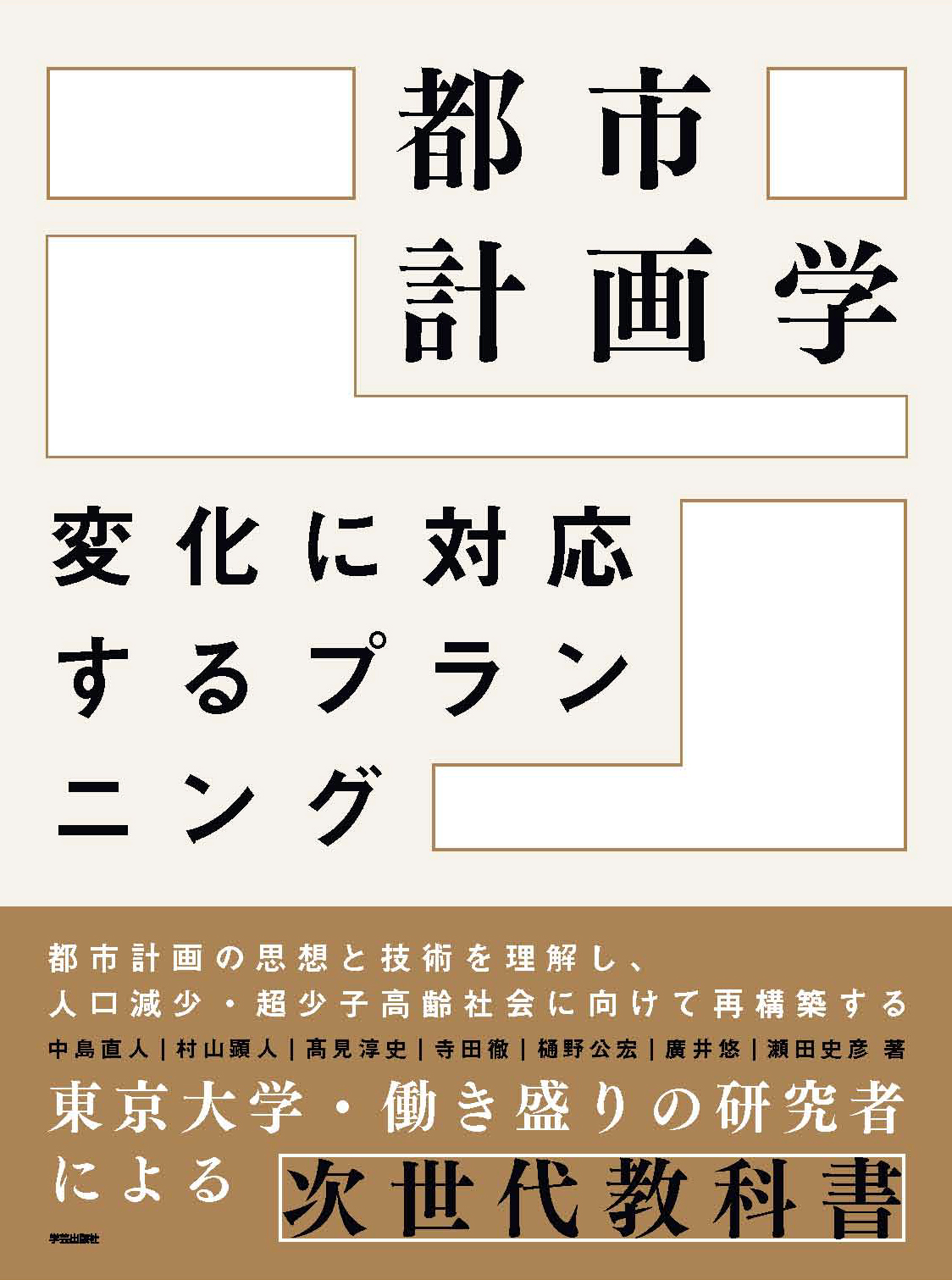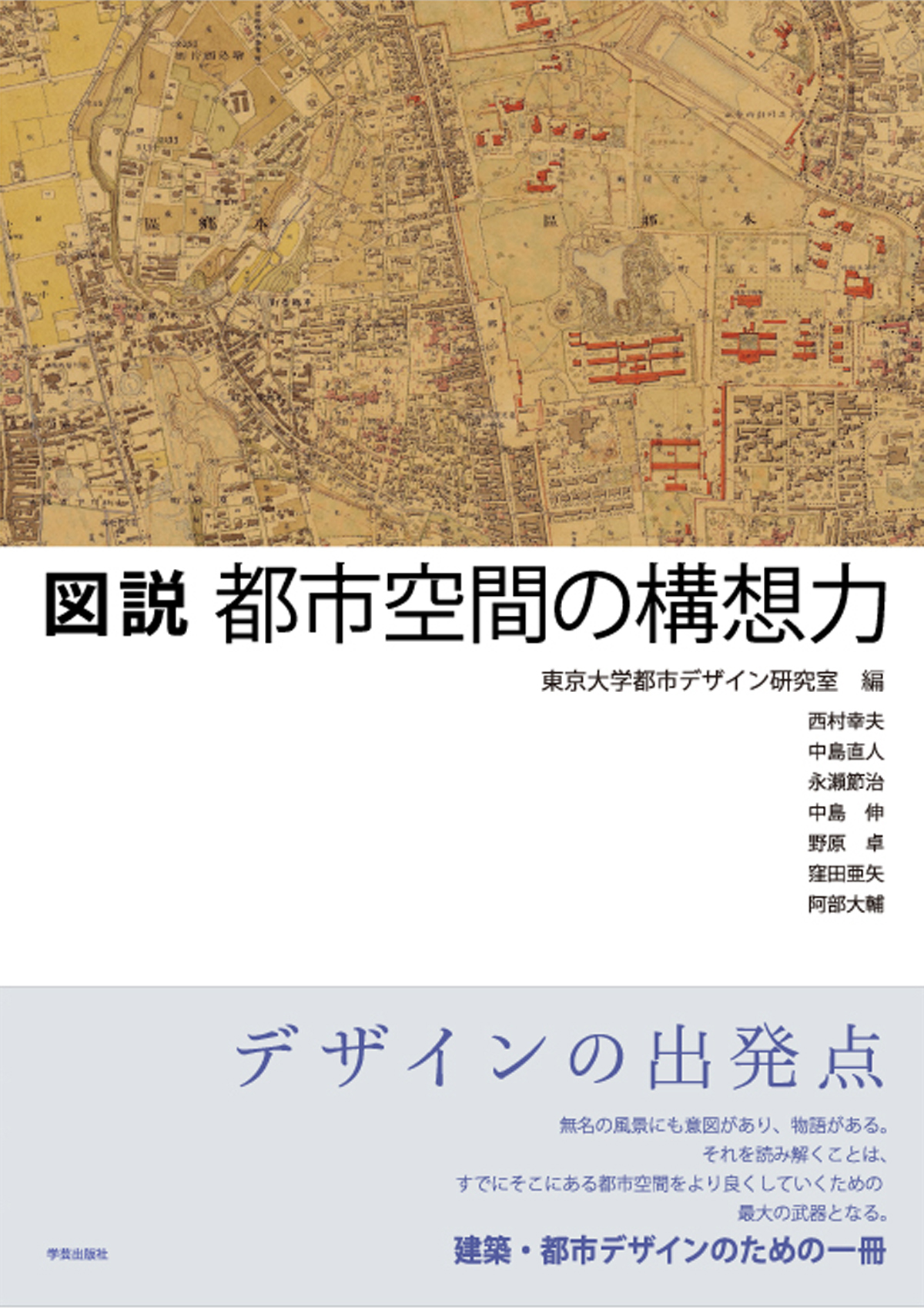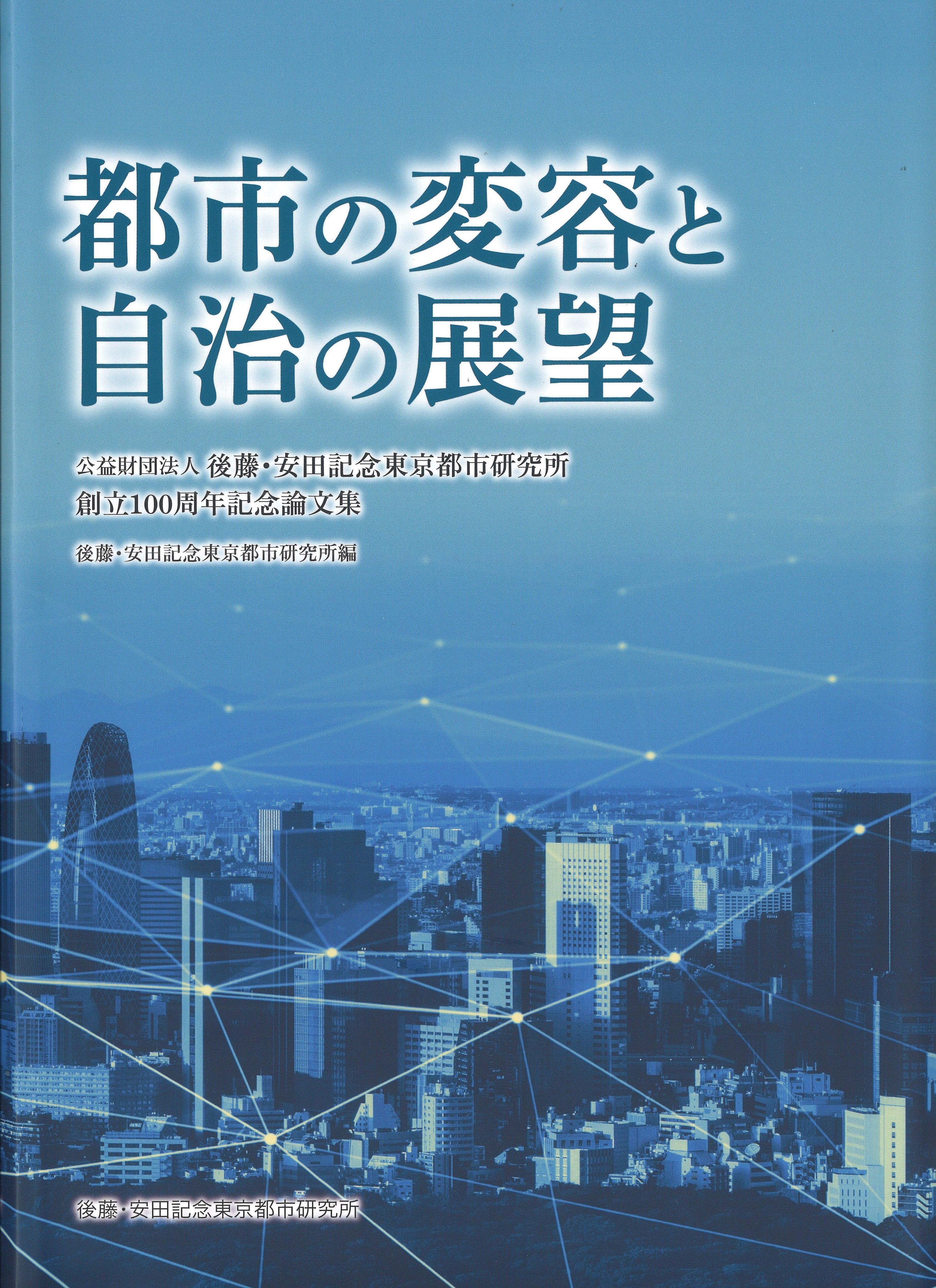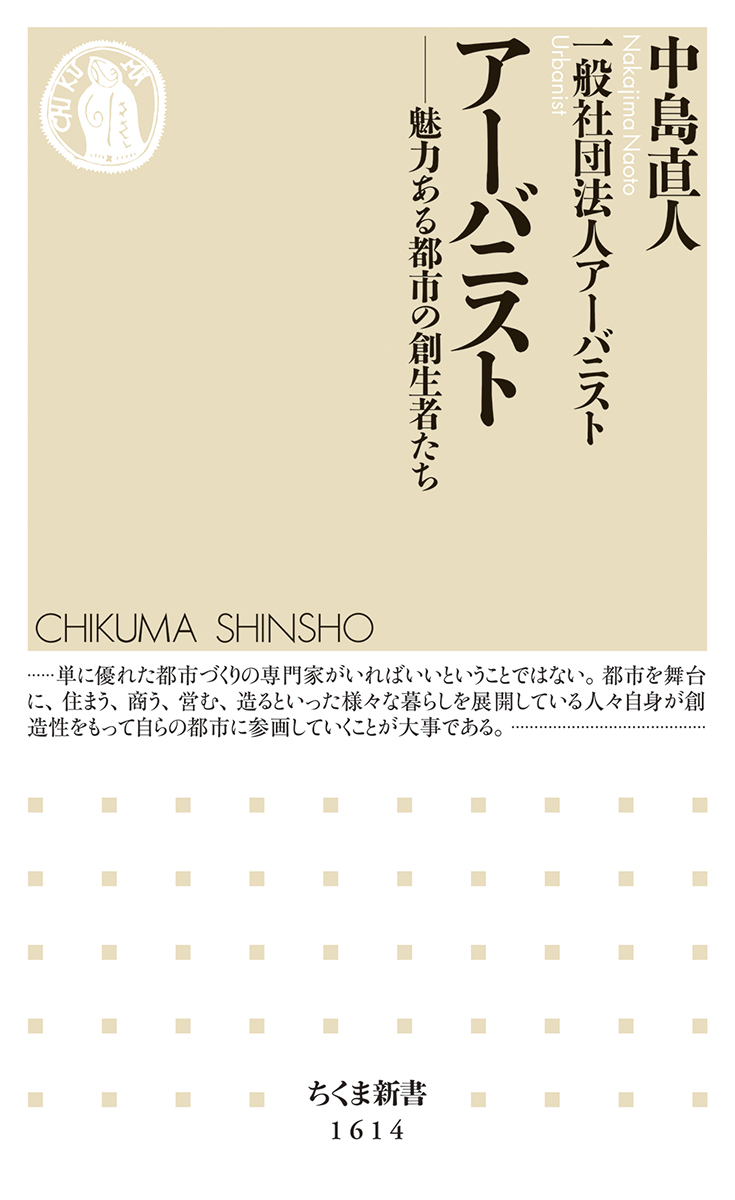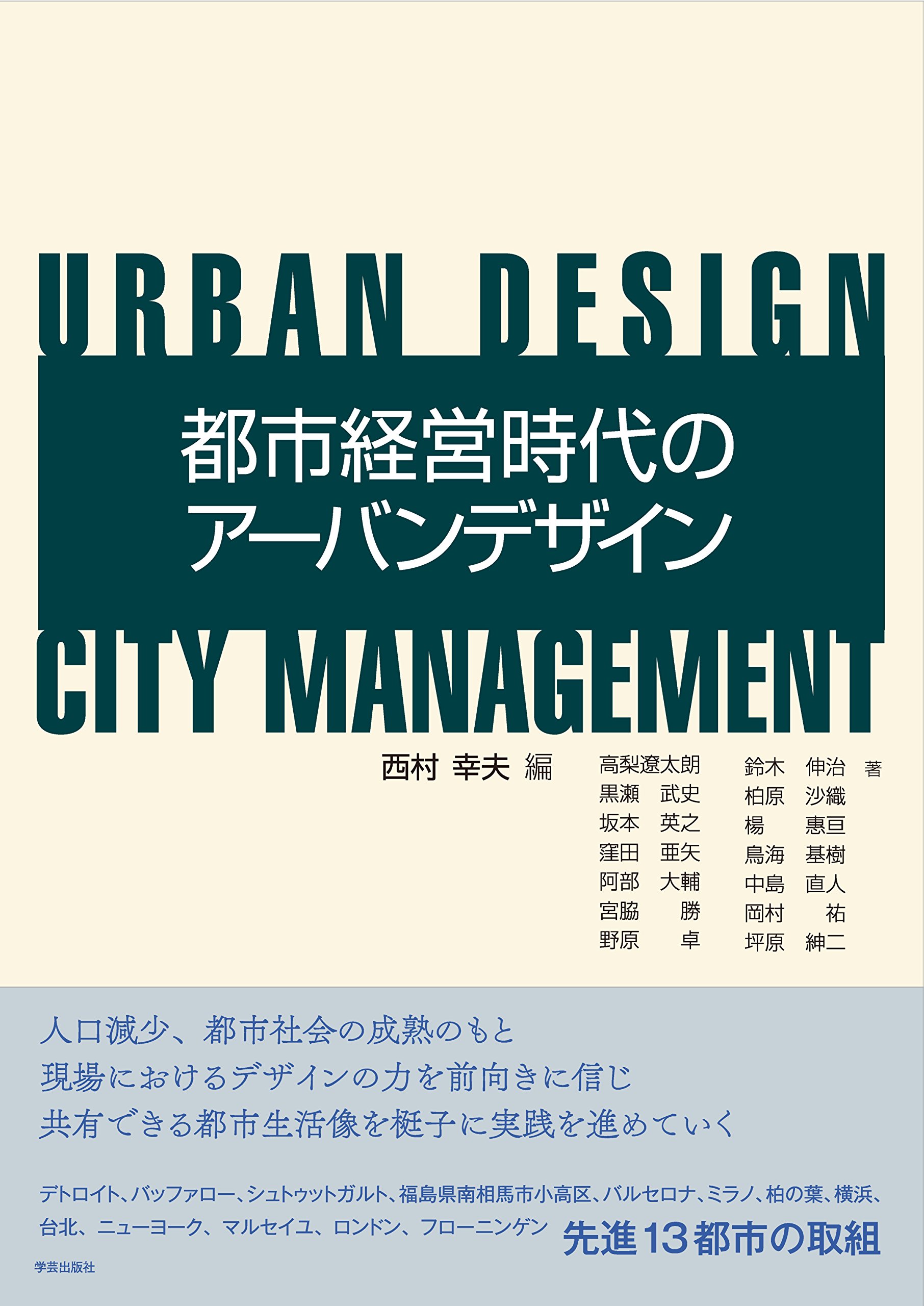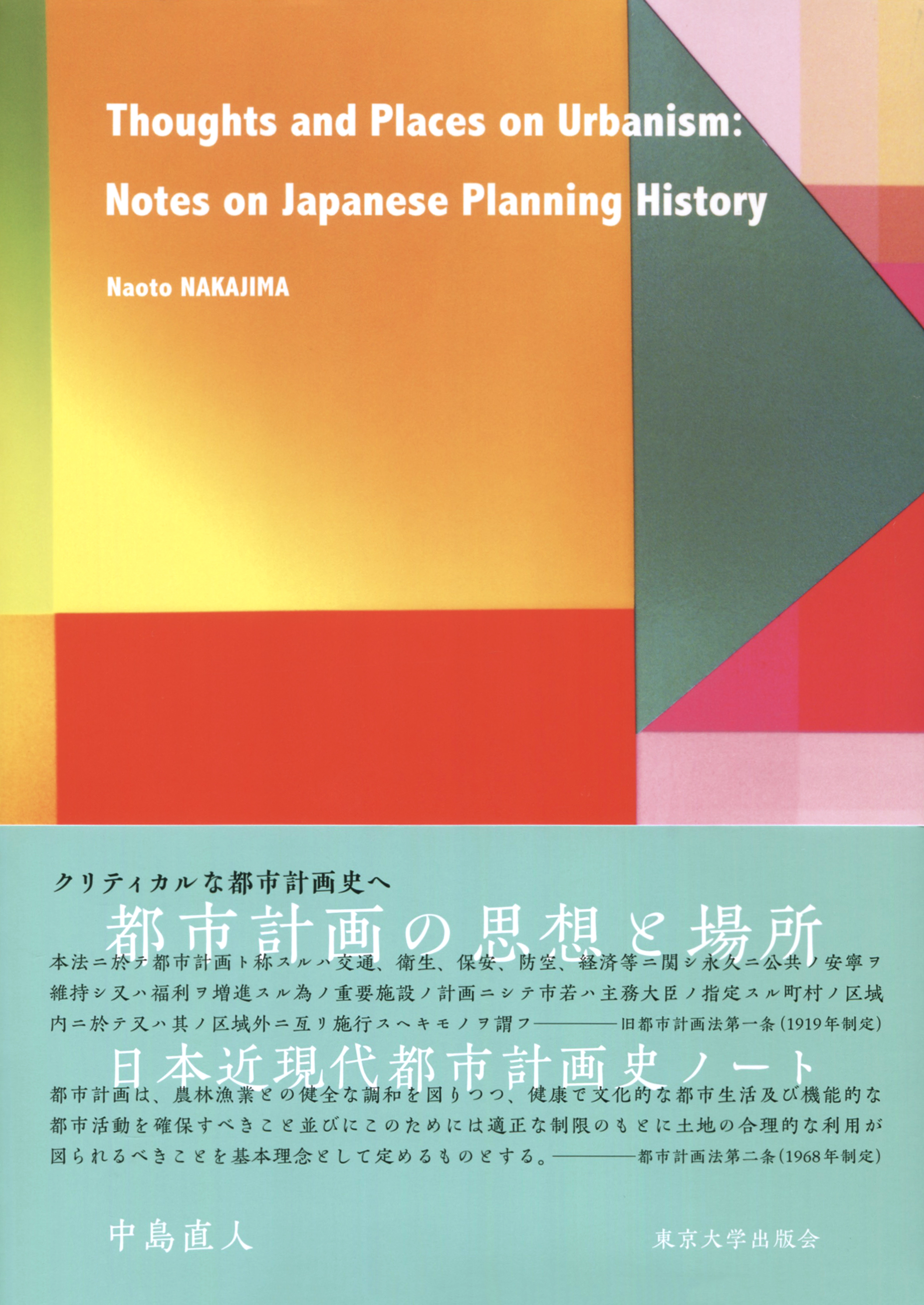
Title
Toshi-Keikaku no Shiso to Basho (Thoughts and Places on Urbanism - Notes on Japanese Planning History)
Size
408 pages, A5 format
Language
Japanese
Released
August 09, 2018
ISBN
978-4-13-061136-7
Published by
University of Tokyo Press
Book Info
See Book Availability at Library
Japanese Page
This work is a collection of studies on the thoughts and places related to the history of modern and contemporary Japanese urban planning. Throughout the work, the development of “critical urban planning history,” which the author proposes as a part of “open urban planning history,” is fresh and original. The question is, what is “critical urban planning history?”
In the introduction, the author collates the history of urban planning research and presents the ideal “open urban planning history.” There are numerous valuable studies in this field, which began in earnest in the 1970s, but this book formulates the basic perspectives of the history of urban planning, including the “historical perspective,” “pursuit of essential nature,” and “planning assets,” through a comparison of the different approaches taken by three of the pioneers in this field of research. Furthermore, the book reorganizes these perspectives based on the value of “giving back to society.” Supported by the framework of “public sociology,” it presents a theoretical framework from the ideal types of “policy urban planning history,” “critical urban planning history,” and “public urban planning history” as a way of opening up conventional “professional urban planning history.” Here, “critical urban planning history” is envisioned as urban planning history that poses a thoughtful question to urban planning professionals: “Ultimately, what is urban planning?”
The sections that follow the introduction address various subjects, but the common thread is that these pose substantial questions that have an impact on urban planning from the standpoint of thoughts and places and builds a framework of ideas in the form of a “critical urban planning history,” as proposed by the author. Specifically, Section 1, “Cities and Urban Planners,” asks the question “how should urban planning and cities relate to each other?” as it traces the trajectory of the ideas of urban planners, such as Eiyo Ishikawa and Eika Takayama. Section 2, “Currents of Thought and Movements in Community Design and Urban Design,” asks “what should be the main constituents of urban planning?” as it delves deeply into the origins of existing concepts, such as suburbs, democratization, community design, and urban design. Section 3, “Tokyo’s Character as a Place and Urban Planners,” asks “how does urban planning create places?” Section 4, “Inheritance of Memory and Urban Planning Heritage,” asks “what is the significance and value of urban planning heritage?” as it investigates the urban planning history of the urban areas of the Sanriku Coast and the Fujisawa redevelopment district. This work goes beyond simply elucidating the historical facts. It demonstrates the potential of urban planning history research to generate thoughtful questions related to urban planning.
In the concluding chapter, the author provides a hypothetical sketch of “public urban planning history,” which implies that urban planning history is open to a wide range of people, including non-specialists, the practice of which will be left as a topic for future inquiries.
(Written by NAKAJIMA Naoto, Associate Professor, School of Engineering / 2019)
Related Info
AIJ Book Award 2020 (Architectural Institute of Japan 2020)
https://www.aij.or.jp/eng/prizes/prize/prize20.html#commendations
CPIJ Thesis Prize 2018 (The City Planning Institute of Japan, May 31, 2019) https://www.cpij.or.jp/com/prize/award/list.html



 Find a book
Find a book


 eBook
eBook